"Hypersonic" is the big buzzword in defense today. Russia, China and the US are all rushing to develop weapons in this new class, which travel above Mach 5, and pundits talk breathlessly about how they'll change everything. As usual, most of the discussion misses several basic facts. Hypersonic weapons have been around for the better part of a century, and while they have already played a major role in changing warfare, the weapons under discussion today are unlikely to live up to the hype they've been given.
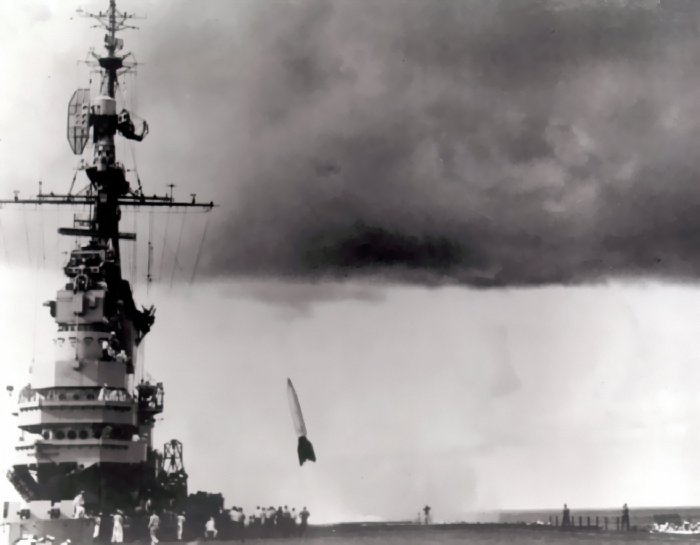
A ship-launched hypersonic weapon
The most basic of hypersonic weapons is of course the ballistic missile, dating back to the famous V-2. While this was an excellent weapon, at least from the perspective of the Allies, ballistic missiles didn't really come into their own until the development of small nuclear warheads, which could compensate for the inherent inaccuracy of the type. The combination of ballistic missile and nuclear warhead quickly came to dominate the strategic battle between the superpowers. Their high speed meant that warning times fell from hours to minutes, putting everyone on a hair trigger. They were also immune to conventional defenses, although the inherent difficulty of shooting them down is generally exaggerated.
But what makes modern hypersonic weapons different? The fundamental shift has been to lower-altitude operations, remaining within the atmosphere at all times in a bid to extend range, reduce detectability and not look like a ballistic missile in the hopes of not making people nervous that nuclear weapons are flying.1 At least for the American programs, a second major difference is the lack of nuclear warheads, although the Russians and Chinese are both reported to be fitting theirs for nuclear use.
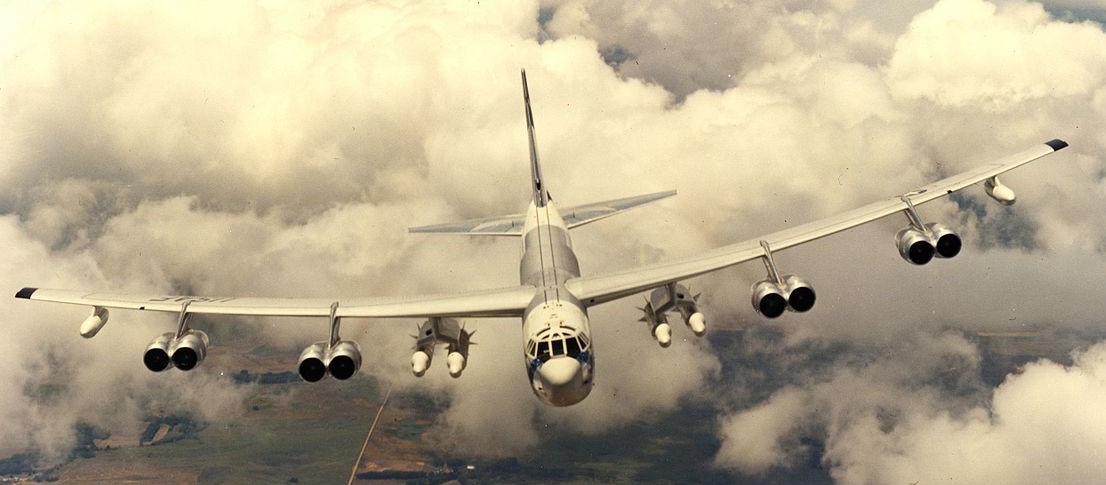
A B-52 carrying hypersonic weapons
The new hypersonic weapons can be broken down into two main types: gliders and cruise missiles. Gliders are taken to speed by a rocket booster and then left at the mercy of aerodynamics, while cruise missiles have some sort of air-breathing engine that keeps them at speed after launch. Both are under development, but the systems that are closest to operational are all gliders, which have the massive advantage of not needing to figure out how to make an engine work at Mach 5+.
Public discussion of hypersonic weapons is difficult because evaluating the claims made of them requires understanding a rather obscure corner of aerospace engineering, and there are precious few aerospace engineers in the public discourse. Fortunately, I am an aerospace engineer who has done a little bit of work in this area, and was able to notice the problems 5 years ago. The problem was that doing a full demonstration of this would require a lot of work, which I didn't particularly feel like doing. But coming to the rescue are David Wright and Cameron Tracy, who published a paper on the subject that makes the technical criticisms I was planning to, with a more sophisticated model than I could have put together. For those who don't want to wade through 36 pages of technical analysis, there's also a piece in Scientific American that captures their conclusion. With that as reference, I can lay out the simple case here.
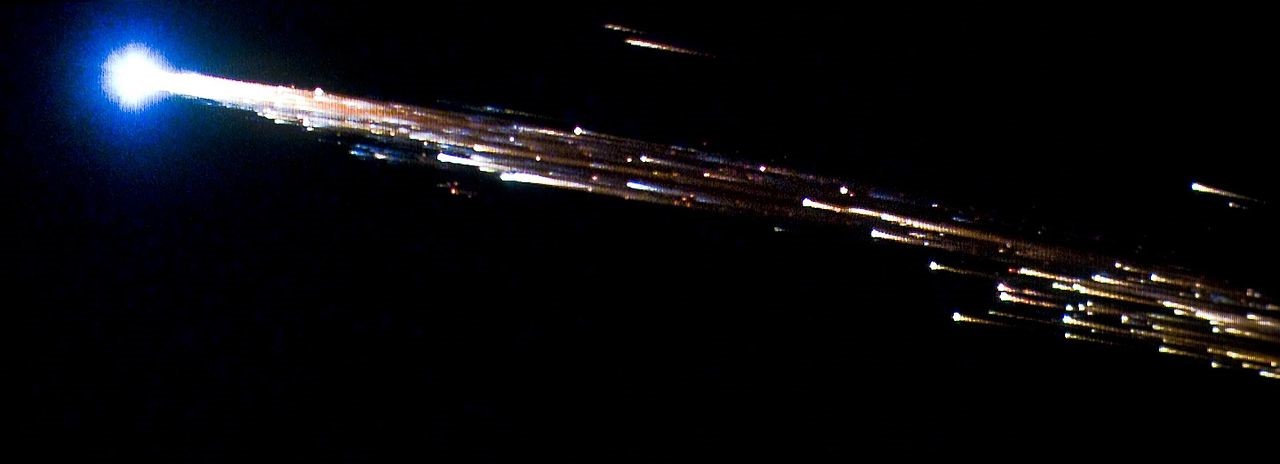
The consequences of angering the air
The basic problem with hypersonic weapons is that air doesn't like it when you go fast, particularly faster than the speed of sound. Generating lift now requires producing a lot more drag, which in turn kills your fuel efficiency. This is why all existing airliners operate around Mach .85. Once you start to approach Mach 3, the air starts to get really annoyed, and you now have to deal with lots of heat in addition to the steadily-worsening efficiency issues.
This is where we have to bring in some actual aerospace engineering.2 The relevant value here is the lift-to-drag, usually written L/D. Lift is what keeps the missile from just falling out of the sky, and higher L/D means more efficient flight. Modern airliners typically have L/D values of 15-20, but once you're past the sound barrier, this gets much worse very quickly, and hypersonic bodies with wind tunnel data tend to have maximum L/Ds between 2 and 3.3 In practical terms, this means that a hypersonic glider is losing a lot of energy very fast. If it wants to maintain altitude and can constantly stay at its best L/D, then it's slowing down by a full Mach number every minute to minute and a half.
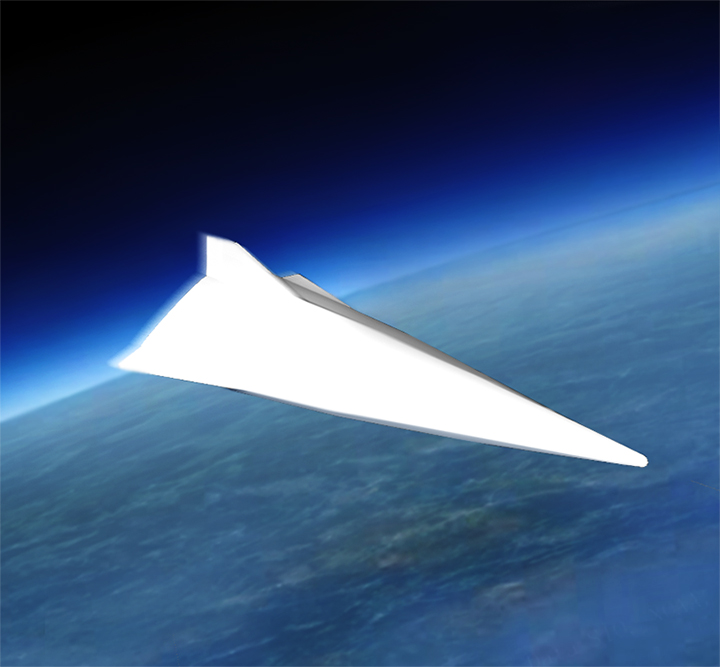
A proposed Chinese hypersonic glider
But things get much worse if it tries to maneuver. A glider will maneuver by increasing the amount of lift it generates and rolling to point the lift vector in the direction it wants to go.4 Even if we assume that L/D stays the same5 a 1-G turn will increase drag by about 40%. But how fast is a 1G turn? Well, if our hypersonic glider is flying at a constant Mach 5, the radius of the turn would be 230 km, and a 30° turn would take about 80 seconds, and cost the glider at least 1.2 Mach of speed if it stays at a constant altitude.6 Oh, and that's a best-case scenario, because turn radius increases with the square of speed. You can try to cut it down by pulling more Gs, but this rapidly piles up extra drag7 and is increasingly likely to tank L/D as well.
So it turns out that the options for a "maneuverable" hypersonic weapon are either losing a fair bit of energy in a gentle turn with a radius the size of a state (or a country, if you're in Europe) or losing enough energy to put yourself well within the envelope of more conventional air defenses.
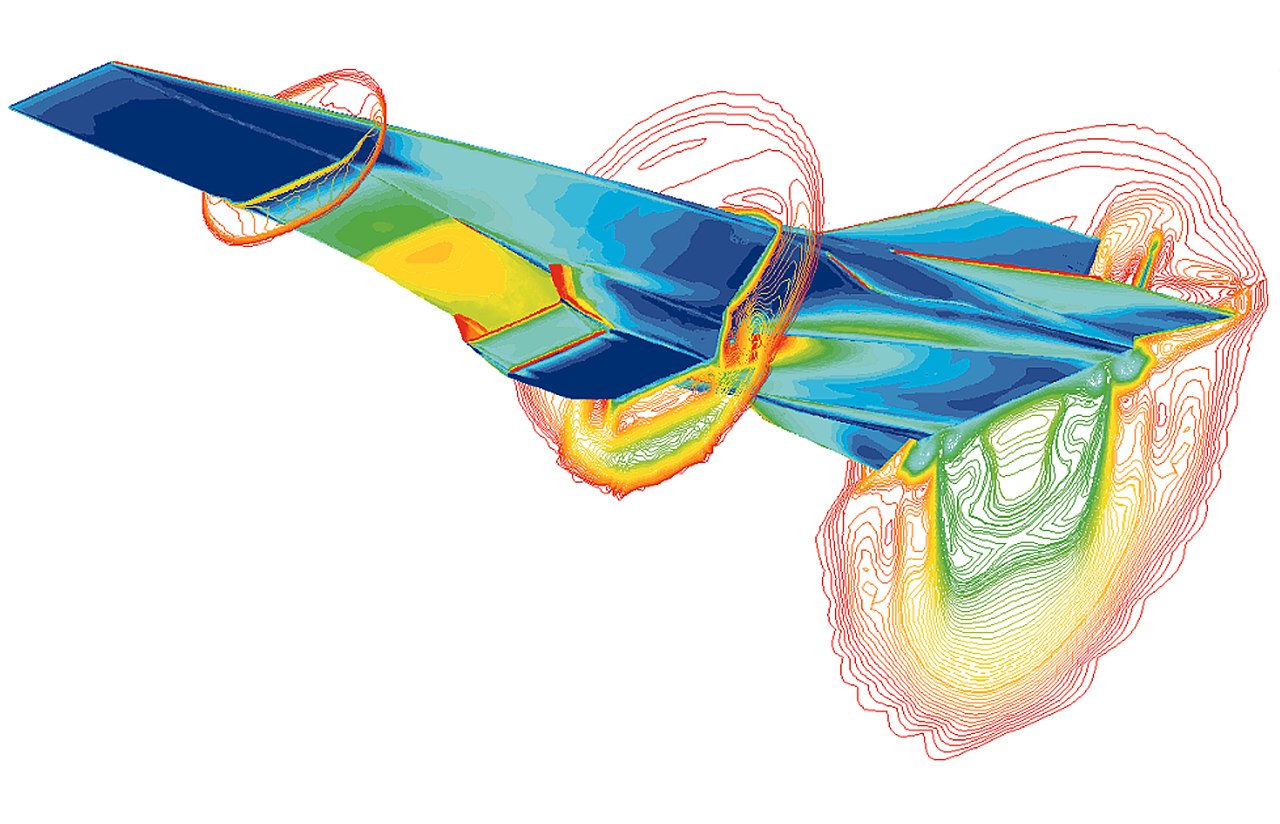
So if maneuverability is a bust, what about stealthiness? There's nothing inherently stealthy about a hypersonic weapon, and the demands of hypersonic aerodynamics are probably not that compatible with minimizing radar signatures. But the main claim about hypersonics is that their relatively low trajectories keep them below the radar horizon until they're quite close to the target. This is true as far as it goes, but at least for the US, radar isn't the only option. Since the 60s, the US has had a constellation of infrared satellites constantly watching the Earth to provide early warning of ballistic missile launches. Most of the energy lost to drag is going to turn into heat, which seems likely to pique the interest of the satellites. And there's little doubt that the satellites will be able to pick up most hypersonic missiles. The older Defense Support Program satellites showed themselves capable of picking up Soviet bombers in the 1980s reliably enough to make them an important component of the USN's air defense plan and the more recent satellites are considerably better. This isn't a system that can give targeting data directly, but it can definitely give a heads-up to ground defenses.
The basic conclusion of all of this is that hypersonics are, at the very least, grossly oversold. They're at the start of the defense media cycle that I described for the F-35, the panacea solution to all of our problems, even when the claims made about them don't make physical sense. On a broader level, they do offer potentially useful capabilities, particularly as intelligence and communication systems get better, opening up time-sensitive targets that may require very rapid responses. But at the same time, there's reason to be skeptical of the capabilities of these systems, given how many of the claims made about them contradict the laws of physics.
2023 Postscript:
This has held up fairly well over the last year. In May, a Patriot battery in Kyiv shot down six Russian Kinzhal missiles, which the Russians had previously claimed were impossible to intercept. There has also been some apparent cooling of US interest in hypersonics, as the AGM-183 ARRW, previously the lead US program in the area, has been reduced to a tech demonstrator in favor of the scramjet-powered HACM, on the official grounds that problems with ARRW make it dubious to field. This is rather surprising to anyone familiar with the history of scramjets, at least if the goal is to field hypersonic missiles soon. I would not be surprised if the US mostly stopped talking about hypersonics over the next couple years, and HACM was cancelled before too long.
1 This has killed off previous proposals to fit an ICBM with a conventional warhead, most notably Prompt Global Strike. ⇑
2 For actual aerospace engineers: Yes, much of this is very simplified. I could do it properly, but it would be much more confusing for everyone else, as well as more work for me. ⇑
3 You can find theoretical studies, occasionally with CFD, claiming up to 6-8. I find these unconvincing without some sort of physical test data to back them up. ⇑
4 A powered missile will do the same, because generated lift is more efficient than thrust. ⇑
5 AE students: do not do this on your homework. ⇑
6 Since I am not being graded, I do not have to be consistent. ⇑
7 A 2-G turn means 120% more drag than level flight, a 3-G turn means 220%, and past that it's reasonably safe to assume that the extra drag is about equal to the number of Gs being pulled minus 1. ⇑

Comments
Maybe these hypersonic weapons will serve the same purpose of diverting resources away from more useful weapons.
That's not something I'd heard of before. If it could detect Bears that would imply it could monitor large airliners.
I'd expect it to be limited to things like the Backfire and Blackjack when they're supersonic.
@Anonymous
The difference is that the US is buying these, so that's a bad thing, not a good one.
@DuskStar
It was Backfires, but they were subsonic. Supersonic bombers (fielded ones, at least) don't spend enough time supersonic to rely on that as a detection mechanism.
Would it be fair to model them not as "maneuvering kamikaze airplane, just faster", but instead as "20+ inch HE shell that can dodge an unimaginative anti-ballistic missile"?
bean:
Is it necessary to get Russia and China to buy them?
bean:
The only way to do that which wouldn't also end up detecting Bears is if they could pick up the afterburners during take off.
Basil Marte:
Could they even do that?
@Basil
That's a good way to think of it, yeah.
@Anonymous
Not necessarily. I strongly suspect that it wasn't detecting each Backfire, it was detecting several of them operating close together. Single planes were presumably below the threshold of detection (hence why it didn't pick up airliners), but if you have a bunch of big planes flying in formation, then you could inch over the detection threshold. And the only things which fly like that are generally bombers. Bears operated alone, so even if the IR signatures are identical, they probably weren't detectable.
Probably. John Schilling usually says that hypersonics are pretty much only useful for defeating systems narrowly tailored for BMD.
@Anonymous
Yes. Little explanation (sorry if you already know this). Most things under "interception" involve a scenario of a faster vehicle trying to close with a slower one, thus they could chase it down even by simply flying toward where it is at the moment. "Proportionate guidance", i.e. flying toward where it will be is very nice and efficient and increases what is possible (range=time is the main concern, with a side of terminal-phase acceleration), but not strictly necessary.
By contrast, intercepting ballistic missiles and satellites uses vehicles that are slower than their target, throwing a brick into their way, that the target can't help but runs into. However, if what is more or less a ballistic missile can pull a few Gs at several machs, the notional interception point moves and accelerates at unreasonable rates, thus any interceptor launched toward the point based on the trajectory pre-maneuver is now wasted.
To make another wild comparison, consider the Japanese diving shells. Aim to miss (by not more than [classified]), adjust late in flight. The big question is how long will it take for defensive systems to be upgraded to go "OK, that thing either will have missed me (or the CVN I'm protecting) or it will have taken one trajectory from this finitely large bundle (limited by max. acceleration). With N missiles, I can cover the entire bundle such that it will fly within D of at least one missile, and probably be sufficiently damaged by the proximity-fuzed warhead to be neutralized. Launch!" and what N is worth avoiding a hit. (Considerations: as time goes on, the bundle shrinks; and different parts of the bundle have different cutoffs for what is the latest launch for a defensive missile to reach it.)
Many moons ago, I was given to understand that there was a "magic island" somewhere above Mach 5 where flight was far more efficient than at M2-5. It was never clear to me why, but thinkers at the time were aiming for this island. Have any of you heard of this?
There are lots of fun theories about things that could happen at high speed, with quite good L/D. I looked pretty hard a year or two ago, and couldn't find any with wind tunnel data backing those theories. Also didn't run across any specific claims about "islands" of particular performance.
I vaugely recall that building a hypersonic wind tunnel is much much tougher than you might think.
@ike How hard do most people think it is to build a hypersonic wind tunnel? Would hypersonic manoeuvrable craft be operating at altitudes where the Knudsen number starts getting high? I can see it being tricky to make the wind tunnel flow realistically when it's less like a gas and more like a load of noninteracting billiard balls.
Thinking more about the IR thing, and the relationship between Hubble and KH-11, what might you see if you put a JWST clone in LEO and pointed it earthwards?
Retired engineer here. I had one course in aero back in the 70s and all I remember is that turbulence is a killer at high Mach (violent vibration prevents control stability).
How do you solve the turbulence problem (enormous chaotic tangential forces relative to the streamlime) at low altitudes and high ambient air density for the duration of the flight and maneuver tasks?
Every pixel in your receiver would be maxed out.
Noise in a telescope image is a combination of noise from the image background and noise from the telescope's receiver. The JWST is designed to pick out interesting objects against the blackness of space, and its various receivers are designed to contribute as little noise as possible. If you put it in LEO and pointed it downward, its field of view would instead be filled by a big noisy object with a temperature of ~300K. Imagine looking directly at the sun, if the sun were also big enough to fill most of the sky.
Earth-observation satellites can still benefit from bigger mirrors: the larger the primary mirror, the better the sensitivity and resolution. But the extreme measures taken for the JWST to reduce noise, including cooling the receivers to a touch above absolute zero, are pointless for an instrument that's going to have a hot, noisy background anyway.
Turbulent flow is not a dealbreaker in actual flight. Most subsonic aircraft have turbulent flow over much of the upper surface of the wing, for example. The timescale of most turbulence is fast enough that you can basically just assume a steady, average force or pressure for most purposes. But that force will not be the same as the force for hypothetical laminar flow over the same geometry, and there's no analytical solution to model or predict it. So you absolutely need to use empirical solutions, and that generally means wind tunnels. Sometimes it means computational models that incorporate empirical soluutions, but then those need to be validated in wind tunnels.
And if you're building a wind tunnel, turbulence suddenly matters a lot more - the thing you're testing will expect to see laminar flow in the air arriving from upstream, and if it's turbulent from the start the results will be off. At merely supersonic airspeeds, it's usually not too hard to design the system so there's at least a laminar flow core and you just have to keep the test object out of the turbulent boundary layer of the tunnel. At hypersonic speeds, the turbulent "boundary layer" really wants to fill the entire test area. I'm not sure how people have dealt with that in the few hypersonic wind tunnels out there, but it's part of the reason why there are only a few hypersonic wind tunnels out there. And each of them comes with a long list of caveats about when you can trust the results.
@Lambert: "what might you see if you put a JWST clone in LEO and pointed it earthwards?"
CIA offered NASA a leftover KH-12 (IIRC), and NASA refused as it was built completely wrong to observe outside, and they would have spent more money adapting it than building a new Hubble-sized telescope.
@Emilio: You're probably thinking of two leftover KH-11 (?) optical systems donated to NASA in 2012. One is being incorporated into the WFIRST mission, scheduled for launch in 2027. Plans for the other one have yet to be decided.
This donation included only the focusing optics, not the receiver systems which make up a plurality of the cost of a telescope. The receiver systems are the part which, as I described above, need to be designed very differently for an earth-observation instrument versus for an astronomical telescope, whereas the focusing optics are relatively - though not perfectly - adaptable between the two roles.
We now have a data point: The Ukrainian Air Force is now confirming media reports (and images) that they shot down a Kh-47 "Kinzhal" hypersonic missile approaching Kyiv on 4 March 2023, using a US-supplied "Patriot" system. Presumably a PAC-3 missile was used.
The Kh-47 is not a worst-case hypersonic threat, as it doesn't have a lifting-body RV and thus will have limited terminal maneuver capability compared to more sophisticated designs. But Patriot is a Cold-War relic, and even PAC-3 is 1990s technology, so there's room for improvement there as well.
We have another data point with the recent decision to cancel the AGM-183 ARRW in favor of HACM, a scramjet. Leaving aside the very remote chance that scramjet technology suddenly started working well, the only way this makes sense is if the people in charge want to shut down the hypersonics program without admitting it was a bad idea all along. Cancel the rocket-powered glider (relatively simple) in favor of the scramjet, then cancel that in a year or two when it runs into intractable problems. Mutter something about future solutions, and trust everyone has moved on.